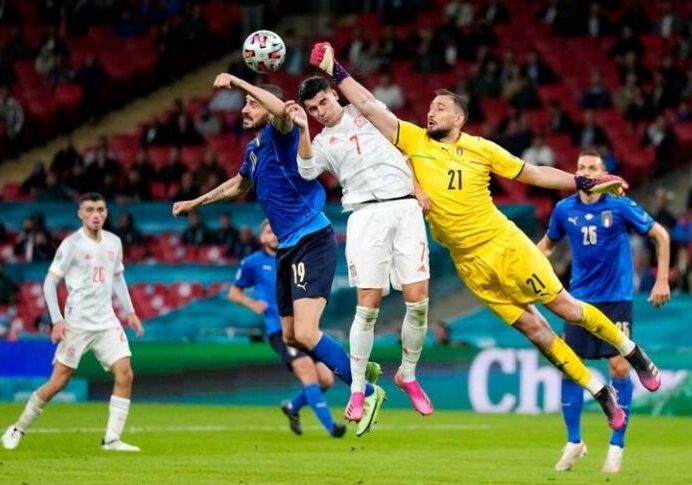Introduction
In the world of football, few tactics have sparked as much debate and fascination as Catenaccio. Known for its defensive prowess, Catenaccio has left an indelible mark on the sport, influencing both its supporters and critics. Originating in Italy, this strategy has been both revered for its effectiveness and criticized for its perceived negative impact on the game. This article will explore the origins, mechanics, and lasting influence of catenaccio là gì xsmb24h.org, while also examining its relevance in modern football.
Understanding Catenaccio: The Defensive Fortress
Catenaccio, meaning “door-bolt” in Italian, is a football tactic focused on solidifying a team’s defense. It emphasizes a well-organized, disciplined backline with the primary goal of preventing the opposition from scoring. Unlike other strategies that promote fluid attacking play, Catenaccio prioritizes defensive stability, making it difficult for opponents to break through.
The Origins of Catenaccio
The roots of Catenaccio can be traced back to the 1940s and 1950s, with the Swiss coach Karl Rappan being one of the early adopters. Rappan’s version, known as the Verrou system, laid the groundwork for what would later evolve into Catenaccio. However, it was Italian coach Nereo Rocco who perfected and popularized the tactic during his tenure with AC Milan in the 1960s, bringing it to international prominence.
How Catenaccio Works?
Catenaccio is built around a sweeper or libero, a player positioned behind the defensive line whose role is to clear any loose balls and provide additional cover. The system typically employs four or five defenders, with full-backs who rarely venture forward. Midfielders are tasked with breaking up opposition play and maintaining possession, while the forwards focus on quick counter-attacks.
The key to Catenaccio’s success lies in its compact structure, which minimizes space for the opposition. By staying organized and maintaining a deep defensive line, teams using Catenaccio can frustrate even the most potent attacks.
The Impact of Catenaccio on Football
Catenaccio’s influence on football cannot be overstated. It revolutionized defensive tactics, proving that a strong defense could be as effective as a prolific offense. The strategy led to numerous successes for Italian clubs and the national team, cementing Italy’s reputation for defensive excellence.
However, Catenaccio has also been criticized for stifling creativity and reducing the entertainment value of the game. Critics argue that the tactic prioritizes results over style, leading to dull, defensive matches. Despite this, Catenaccio’s legacy endures, with its principles still evident in various forms of modern football.
Catenaccio and XSMB24h.org: A Unique Intersection
The intersection of Catenaccio and XSMB24h.org may seem unusual, but it highlights the widespread influence of football tactics beyond the pitch. XSMB24h.org, a platform primarily known for lottery and gaming, has drawn parallels between the strategic thinking in football and the strategic planning required in its domain. The application of Catenaccio’s principles in this context underscores the broader relevance of tactical discipline and defensive strategies.
Why Catenaccio Still Matters Today?
In an era dominated by fast-paced, attacking football, Catenaccio may seem like a relic of the past. However, its core principles of organization, discipline, and counter-attacking remain relevant. Teams that prioritize defense can still achieve success, particularly in tournaments where a single mistake can be costly. Catenaccio’s emphasis on defensive solidity provides a valuable blueprint for teams facing superior opponents.
Catenaccio vs. Modern Tactics
Modern football has evolved significantly since the heyday of Catenaccio. Today, tactics like tiki-taka and gegenpressing dominate, focusing on possession, high pressing, and quick transitions. Despite this, elements of Catenaccio persist in the strategies of teams that prioritize defensive organization and counter-attacking play. Comparing Catenaccio with these modern tactics reveals its continued influence on the game.
How Teams Can Use Catenaccio Today?
To successfully implement Catenaccio in today’s game, teams must adapt its principles to modern demands. This involves maintaining a disciplined defensive structure while incorporating elements of fluidity and flexibility. Teams can use Catenaccio as a foundation, especially in matches where they expect to be under pressure. The key is balancing defensive solidity with the ability to transition quickly into attack, making the most of counter-attacking opportunities.
The Future of Catenaccio
As football continues to evolve, so too will the tactics that shape it. While Catenaccio may no longer be the dominant strategy, its influence is far from over. Coaches and teams will continue to draw on its principles, adapting them to new challenges and innovations.
1. Is Catenaccio still used in modern football?
Catenaccio is not widely used in its original form, but its principles remain relevant. Many teams still adopt a defensive, counter-attacking approach, particularly when facing stronger opponents. The tactic’s emphasis on organization and discipline continues to resonate with coaches who prioritize defensive stability.
2. How does Catenaccio compare to modern tactics?
Catenaccio contrasts sharply with many modern tactics that emphasize possession and high pressing. While Catenaccio focuses on defense and counter-attacks, modern strategies often prioritize controlling the game through ball possession and aggressive pressing. Despite these differences, the core principle of minimizing opposition space remains a common thread.
3. Can Catenaccio work in today’s game?
Catenaccio can still be effective, particularly in specific match scenarios where a defensive approach is necessary. However, to succeed in today’s game, it must be adapted to incorporate modern elements like pressing, fluidity in defense, and rapid transitions. A hybrid approach that combines Catenaccio’s defensive discipline with contemporary attacking principles could prove successful.
Conclusion
catenaccio là gì xsmb24h.org remains one of football’s most iconic and controversial tactics. Its focus on defense and discipline has left a lasting impact on the game, influencing generations of coaches and players. While modern football has moved towards more attacking strategies, the principles of Catenaccio continue to offer valuable lessons in organization, resilience, and tactical awareness. For teams seeking a balanced approach that emphasizes defensive solidity, Catenaccio’s legacy provides a timeless blueprint. As the game evolves, so too will the ways in which Catenaccio is adapted and applied, ensuring its continued relevance in the ever-changing world of football.
